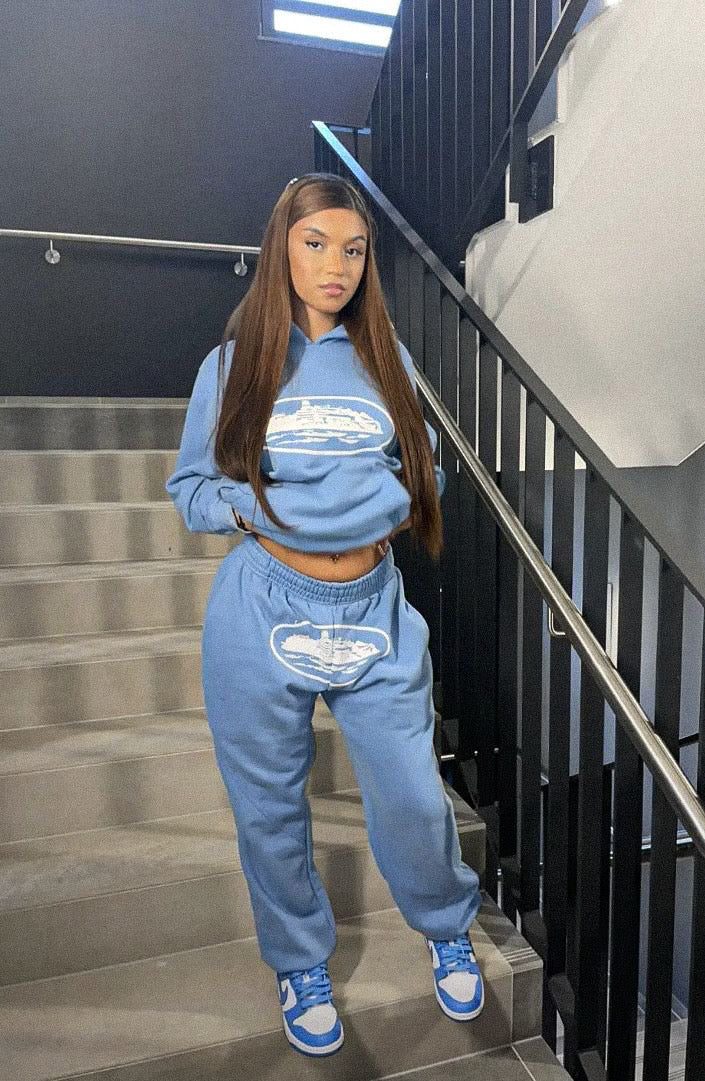
Eco-Friendly Kids’ Clothing Trends for 2025. As we step into 2025, the demand for eco-friendly kids’ clothing continues to rise, driven by increasing awareness about sustainability and environmental impact. Parents and businesses alike are recognizing the importance of making responsible fashion choices, not only for the health and comfort of children but also for the planet. This article explores the latest trends in eco-friendly kids’ fashion, highlighting why these sustainable options are becoming so popular. From organic materials to ethical production practices, we’ll look at what’s shaping the future of children’s clothing.
What is Eco-Friendly Kids’ Fashion?
The Shift Toward Sustainability
Eco-friendly kids’ clothing refers to https://corteizcargos-uk.com/ apparel made with sustainable materials, eco-conscious production methods, and an emphasis on reducing waste and carbon footprints. This includes clothing made from organic cotton, bamboo, recycled fabrics, and other materials that minimize environmental harm. In 2025, these trends have evolved to embrace not only the environmental benefits but also innovative approaches to fashion that align with modern consumer values.
Materials Revolutionizing Kids’ Fashion
One of the biggest changes in eco-friendly kids’ clothing is the growing use of materials that are kinder to the environment. Organic cotton, which avoids harmful pesticides and chemicals, is gaining ground as a go-to fabric for children’s garments. Additionally, bamboo fabric is becoming increasingly popular due to its sustainability and softness, making it ideal for sensitive skin.
Another emerging material is recycled polyester, which repurposes plastic bottles or old clothing to create new, durable fabrics. Recycled fabrics significantly reduce the need for virgin polyester, which is harmful to the environment during production. The innovation doesn’t stop there, as brands are looking into algae-based textiles and plant-based fibers, which are both biodegradable and have a minimal ecological impact.
The Importance and Benefits of Eco-Friendly Kids’ Clothing
Health and Safety for Children
One of the most significant reasons eco-friendly clothing is gaining traction is the health benefits it provides for children. Traditional clothing made with synthetic fibers often contains chemicals that can irritate delicate skin. Organic cotton and bamboo fabrics, however, are hypoallergenic and free from harmful chemicals, offering parents peace of mind.
Environmental Impact Reduction
The environmental impact of fast fashion is enormous https://corteizcargos-uk.com/air-max-95/, contributing to pollution, waste, and the depletion of natural resources. Eco-friendly kids’ clothing takes a different approach by focusing on reducing waste, conserving water, and using biodegradable materials. By choosing sustainable fashion, consumers help decrease the overall demand for mass-produced clothing, which often ends up in landfills.
Durability and Longevity
Eco-friendly materials tend to be more durable, which means kids’ clothes last longer, reducing the frequency with which parents need to buy replacements. This long-lasting quality contributes to reducing the cycle of consumption that is typical of fast fashion. Many sustainable brands are also producing timeless designs, so parents can invest in items that can be handed down to younger siblings or even passed on to friends and family.
How to Embrace Eco-Friendly Fashion for Kids in 2025
Start with Sustainable Fabrics
When shopping for kids’ clothing, prioritize garments made from organic cotton, bamboo, and other eco-conscious materials. These fabrics not only feel better against your child’s skin but also ensure that the clothing is gentle on the planet. Look for clothing brands that proudly display certifications like GOTS (Global Organic Textile Standard) or OEKO-TEX, indicating the use of non-toxic materials.
Choose Versatile and Timeless Styles
One way to contribute to sustainability is by selecting clothes with classic, versatile designs that can be worn in multiple settings and mixed with other items. Instead of constantly purchasing trend-driven clothing, opt for a wardrobe of well-made, functional pieces. This ensures that items will be worn for longer periods, reducing waste.
Prioritize Ethical and Transparent Brands
In 2025, transparency in production practices is becoming a key aspect of responsible fashion. Many brands now provide information about their sourcing, manufacturing processes, and labor practices. Choosing companies that uphold ethical standards ensures that children’s clothing is produced in a way that benefits both people and the planet.
Consider Secondhand or Upcycled Clothing
One excellent way to support sustainability is by purchasing secondhand or upcycled clothing. Thrift stores and online resale platforms offer a wide range of gently used kids’ clothes, and many brands are now specializing in upcycled fashion. These garments have a second life and require fewer resources than new clothing, making them an environmentally friendly option.
Encourage Clothing Care and Repair
Teaching children how to care for their clothes helps extend their lifespan. Regular washing, avoiding excessive heat in the dryer, and repairing items when necessary are all practical ways to reduce the environmental impact of kids’ fashion. Eco-friendly clothing is often more durable, so with proper care, it can last for years.
Conclusion
The eco-friendly kids’ https://www.bigbizstuff.com/ clothing trend for 2025 is a win-win for both parents and the planet. With sustainable materials, ethical production methods, and a focus on longevity, these garments provide benefits far beyond the immediate purchase. As we continue to embrace sustainability, the demand for eco-conscious fashion for children is only going to grow. By making mindful choices, parents can ensure that they are not only dressing their children in comfortable and stylish outfits but also helping to create a better future for the next generation. Start today by supporting brands that prioritize the environment, and take action toward building a sustainable wardrobe for your little ones.